Imagine if you were as outfitted with tools as Inspector Gadget — how much more straightforward and more effective you would be in your job as an industrial maintenance technician?
In this article, we’ll look at a mix of maintenance tools you can use to boost your company’s industrial machinery reliability as well as monitor plant conditions proactively using automation, including their applications and costs. Let’s start with the actual physical tools.
Tools for leak detection
Leak detection technologies have evolved over the last few decades. There are now cost-effective and easy-to-use solutions for troubleshooting various industrial equipment leaks.
Ultrasonic leak detectors
Modern ultrasound leak detectors pinpoint the exact source of even the most minor leaks in hydraulic equipment, pneumatic systems, air compressors, gearboxes, engines, fuel systems, or any pressurized or vacuum systems.
Example: Synergys LeakShooter Ultrasonic Leak Detector V3+ IR
Cost: $4,267.00
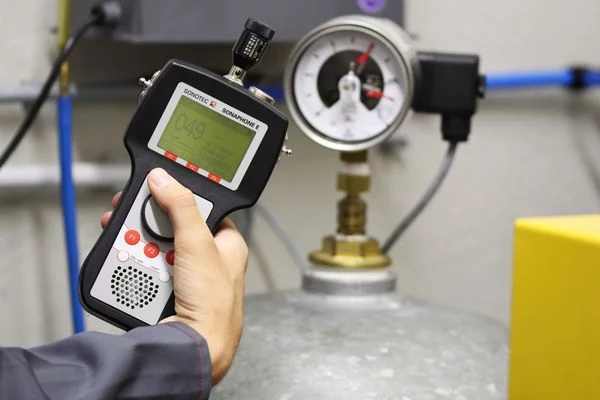
Sonotec Ultrasonic Leak Detector. Source: Sonotec.eu
Air and gas leak detectors
A common maintenance annoyance in any plant is air system leaks. For example, refrigeration systems such as air conditioning. These leaks can quickly build across the plant and wear out air compressors or vacuum pumps.
It also increases your plant’s energy requirements and reduces process efficiency. According to the U.S. Department of Energy, air leaks can waste up to 30% of your compressed or vacuum air system’s energy. That’s a lot!
Combustible gas leaks can also cause potential safety concerns. In addition to locating these compressed air/gas leaks or vacuum in-leakages, ultrasound leak detectors can help detect faulty steam traps. Leaking steam traps can eat away a sizable portion of your plant’s production value. Also, failed steam traps cannot remove the harmful condensate that can damage your equipment.
Example: Fluke Air Leak Detector
Cost: $20,299.99
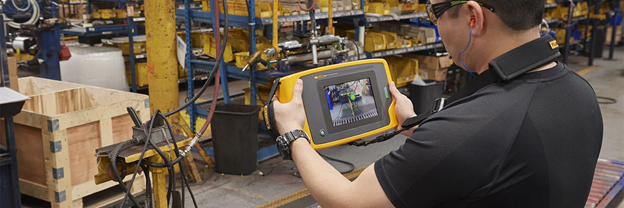
Fluke Air Leak Detector. Source: Fluke.com
Water leak detectors
Water leak detectors generally utilize technologies like acoustic or sonar-based leak detection. They can also use secondary detection methods such as differential pressure and flow measurements to detect fluid power.
Example: Fisher XLT 100 Compact Acoustic Water Leak Detector
Cost: $997.00
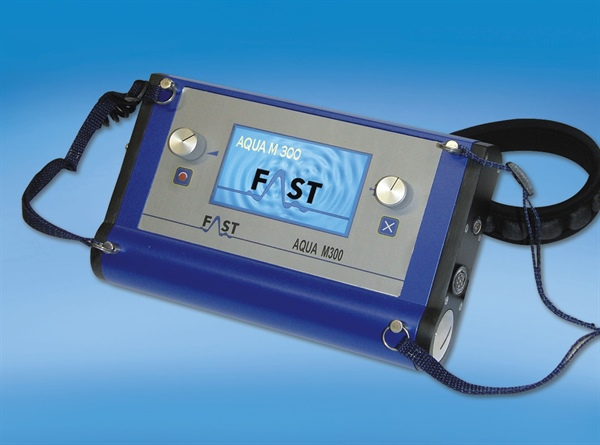
FAST Acoustic Water Leak Detector. Source: Pipe tools
Tools for thermal imaging
Thermal imaging equipment is easy to find and operate. You can obtain temperature readings with a handheld device to avoid equipment downtime due to a planned shutdown for routine maintenance activities — your supervisor will love this!
Example: Flir K33 240 x 180 Thermal Camera Kit
Cost: $3,437.99
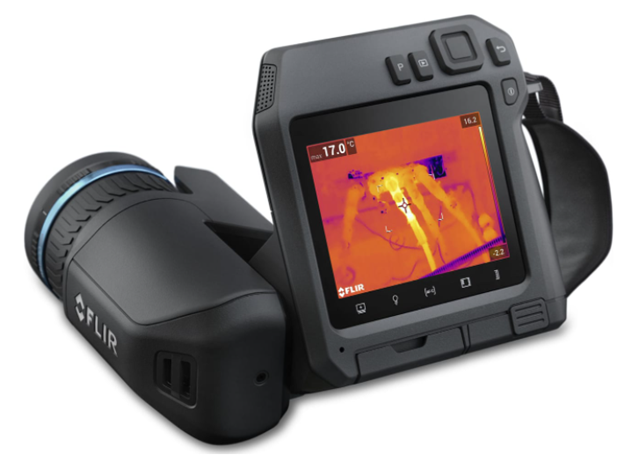
FLIR Thermal Imaging Camera. Source: Flir.ca
With thermal infrared imaging, you can quickly identify insulation gaps, faults in electrical systems and monitor the performance of rotating equipment on your plant floor.
The main downside of handheld thermal imaging devices is that constant manual observation is impractical. A more detailed and accurate system would need diagnostic thermal tools with connectivity. As such, thermal sensors can be part of your plant’s predictive maintenance program. We will discuss this in greater detail later.
Tools for remote visual inspection
“Remote visual inspection” — a fancy term for tiny cameras that go into tiny spaces.
Remote visual inspection tools such as borescopes and videoscopes are instrumental in inspecting difficult-to-access areas. Without these tools, these spaces would be virtually impossible to reach and physically check without disassembling equipment.
Dismantling equipment is a resource-intensive and intrusive process. In most cases, it ends up requiring a system or plant outage — something that won’t make anyone happy!
The bulk of such visual inspection equipment is generally quite portable. It can range from high-end videoscopes with HD video recording and an LCD monitor to the simpler fiberscopes which can transmit images to an eyepiece.
Example: 3mm Articulating LED Videoscope
Cost: $7,599.00

Borescope in action. Source: USA Borescopes
There is a wide range of applications for remote visual inspection within manufacturing. You can use them while inspecting rotating equipment (gearboxes, transmissions), pressure vessels (heat exchanges, boilers), and even building and process maintenance (pipes, ducts).
Remote visual inspections can help identify and address issues before they result in equipment failure by incorporating them into your plant’s preventive maintenance plan. It can free up your team’s time and your budget, which will make you look like a rockstar with your manager.
Checklist for Creating a Preventive Maintenance Plan
Following a consistent Preventive Maintenance Plan can make life easier. Use this checklist to create your own!

Condition monitoring technology
One of the critical advantages of condition-based monitoring (CBM) is its non-invasive nature. CBM obtains measurements without equipment shutdowns or changes in operational alignment.
System performance data is collected either at specific intervals or continuously in real-time through sensors and transmitters. Most manufacturers can now design and implement these sensors as retrofits, though it is best to integrate measurement devices into the system during design.
The following are some of the techniques commonly used in CBM.
Vibration monitoring
Vibration sensors can measure the three major parameters to help find abnormalities:
- Amplitude/displacement
- Velocity
- Frequency
For example, rotating equipment, such as pumps and compressors, exhibit a certain acceptable vibration level. When their bearings degrade, or shafts fall out of alignment, the intensity of vibration increases, signaling that at least part of the equipment needs immediate repair or replacement.
To get the most out of vibration analysis and predictive analytics, you should combine it with modern CMMS software like Limble. Limble can communicate with your vibration sensor and automatically trigger emergency work orders. To learn more about how Limble tracks vibration rates, check out our blog post on the basics of vibration analysis.
Example: Fluke 810 Vibration Tester
Cost: $10,505.99
On-line oil analyzer
Oil analysis and lubricant analyzers can be used to measure and monitor viscosity, temperature, pH, and moisture to detect when a changeout is required, or worse – if any of the oil-wetted rotating elements are approaching wear-out.
Example: PicoScope 4000A Series
Cost: $2,585.00
Electrical analysis
Electrical analyses use clamp-on or in-line ammeters to measure current in a circuit. They help maintenance teams gauge when equipment, such as an electric motor, draws an abnormal amount of running current. This is often an indication that it may be time for motor rewind, insulation checks, or load re-verification.
Example: Fluke 1773/BASIC – Power Quality Analyzer
Cost: $6,073.99
Process parameter monitoring
Process parameter monitoring may include measuring and monitoring differential pressure, line pressure, temperature, and flow velocity to detect gradual degradation and respond before they spiral out of control.
Example: Fluke 3540 FC KIT – 3-Phase Power Monitor
Cost: $3,343.00

Fluke Vibration Sensor. Source: Fluke.com

Fluke Power Monitor. Source: Fluke.com
The data obtained through the sensors is usually compared with baseline data to detect anomalies and deviations. Once detected, your CMMS can alert you about upcoming issues and generate automatic work orders (at least those CMMS solutions that offer integration with condition monitoring sensors).
More sophisticated versions of this technology (used for predictive maintenance) can even utilize machine learning to continuously adapt to changing conditions and keep learning from the data to better predict equipment failures rather than just relying on fixed trigger points for alerts.
For more details on the available CBM tools and technology and their use cases, you can refer to the Complete List of Condition Monitoring Techniques we compiled for MRO Magazine.
The Essential Guide to CMMS
The Essential Guide to CMMS

Mobile CMMS
A CMMS can help you plan and optimize your maintenance resources and programs leading to healthier assets, reduced downtime, and lower resource wastage. According to a study outlined in ReliabilityWeb, the implementation of CMMS can lead to:
- 5-15% reduction in maintenance costs from better workflow management
- 20% cost savings from optimized inventory and procurement management
- 20% reduction in downtime costs from improved productivity and resource allocation
A CMMS is the one tool that ties all the other previously mentioned tools together. It forms the backbone of a maintenance information management system. But how? Let’s look at how a CMMS can benefit your industrial maintenance program.
Benefit 1: Optimize maintenance programs and strategies
People who need something fixed report it to the maintenance coordinator or supervisor. At least you hope they do, right?
But hope isn’t really a maintenance strategy, at least not when it comes to getting people to report problems. More often than you would like, you find out something has been broken for days (weeks? months?) before a team member discovered it and submitted a work request.
Let us quickly show you how simple it is to submit a work request through Limble.
Most work requests get into Limble directly through our work request portal, thanks to Limble’s easy-to-snap QR codes.
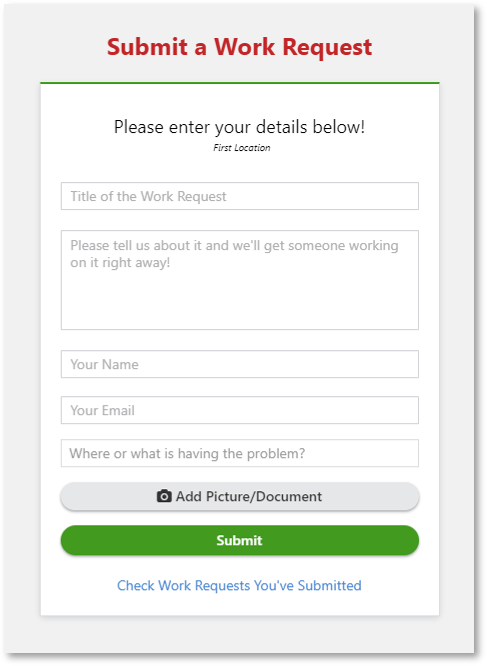
Limble’s work request portal
Limble allows you to use QR codes to identify assets and speed up the ticket submission process.
Anyone can submit a maintenance work request, and all requests end up in the same portal in the same format without adding a user license (what a way to keep costs down)!
Each QR code is unique and associated with a particular asset. Limble attaches that exact asset to the request when a user scans the code.
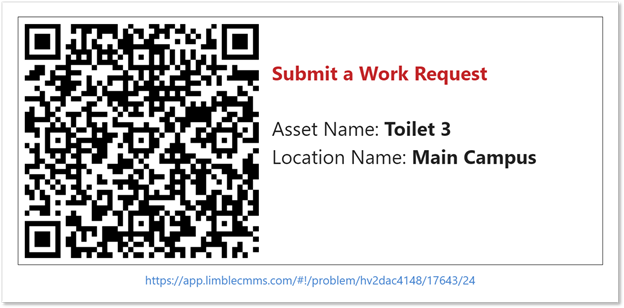
QR codes can be used by everyone to quickly identify the asset
Now, when requesters report that a toilet broke, you know it’s toilet #3 on the second floor of Hall B of the Johnson Building. You also know that this particular toilet has had problems with the flange twice already this year.
As your team solves the reported problem, they can easily update the original requester with the status of the fix by adding comments directly into the work order. And once the fix is complete, all the notes will live in the asset’s history.
Benefit 2: Store important information for quick onboarding
CMMS stores detailed information on assets, parts, manuals, SOPs, programmable logic controllers (PLC), checklists, and more in one centralized database.
With the trend of high staff turnover in the manufacturing industry, new industrial maintenance technicians and operations personnel can get onboarded quicker. Easy access to important documentation can also reduce the steep learning curve.
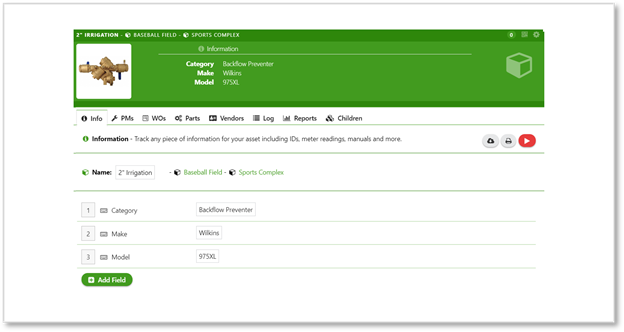
Asset information tab in Limble
With just one click in Limble, any employee can see an asset’s work history (every task ever completed on that asset), scheduled maintenance, current spare parts inventory, preferred vendors, and work history.
We’ll talk more about the importance of asset tracking in a minute, but first, we want to share a few additional benefits.
With Limble, you will never have to wonder what parts you have in stock, where they’re in use, when parts will run out, or whether you’ll have the necessary parts to do your job. Our parts management section solves these problems and more.
Here is a list of all the tools you can use in our parts management section to give you an idea of how powerful a tool it can be:
- Get instant push/email notifications
- Instantly know whether a part is in stock
- Automatic parts usage tracking
- Know part usage
- Eliminate unused parts
- Real-time reporting
- Optimize stock levels
- Barcode lookup
Benefit 3: Real-time condition monitoring integration
Predictive maintenance has proven to offer a high ROI, but many companies hesitate to implement it because of the (often) high implementation costs.
Limble offers an affordable full sensor kit and re-inventing the implementation process to be intuitive and straightforward.
Now any business can implement a predictive maintenance program.
The process is straightforward:
- You purchase our starting package
- We mail you preconfigured sensors
- You plug in the sensors where you want them
It really is that easy because our software does everything else!
Learn more about how we make it easy and affordable for any company to implement sensors for their maintenance program or IoT devices and setups by reading our blog; Limble introduces modular IOT sensor setup.
Tools to support internal processes
Industrial maintenance tools are great, but they’re not going to help you that much without strong internal processes and practices.
An often overlooked area is asset tracking. One example would be ensuring that all physical assets are tracked and documented in a live real-time registry. Instead of having all this information floating around in paperwork, text strings, or worse, inside someone’s head, you can easily keep track of all your assets within Limble. You can even organize them by location, building, room, etc.
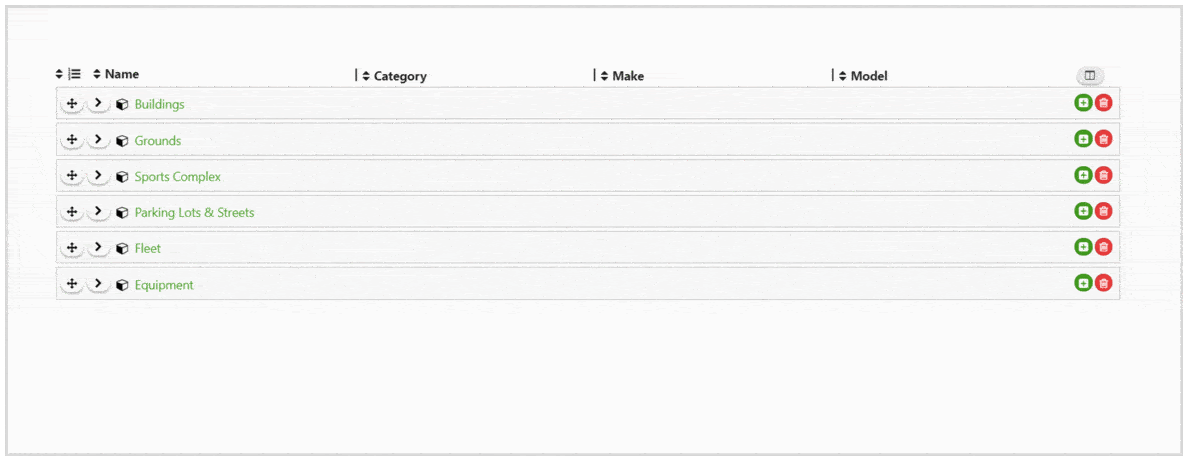
Creating asset hierarchies inside Limble CMMS
Another example is developing and implementing SOPs for logging tools when returning or collecting them in and out of inventory at the end of each shift. Having the schematics on tool usage helps you assess tool-related bottlenecks and preventive replacement based on use.
Good maintenance tools make everyone’s lives easier
Good maintenance tools can vastly improve the effectiveness of your maintenance teams. However, to ensure maintenance workers use these tools to their maximum potential, they also have to receive hands-on training on how to use them.
By accelerating the adoption of modern maintenance tools, manufacturers and their maintenance teams can make their plants safer, smarter, more efficient, and more robust — making everyone’s lives easier in the process (which is sure to get you a lot of kudos).
If you’re ready to get started improving your maintenance program with Limble CMMS, start a free trial or set up a demo with us today.
